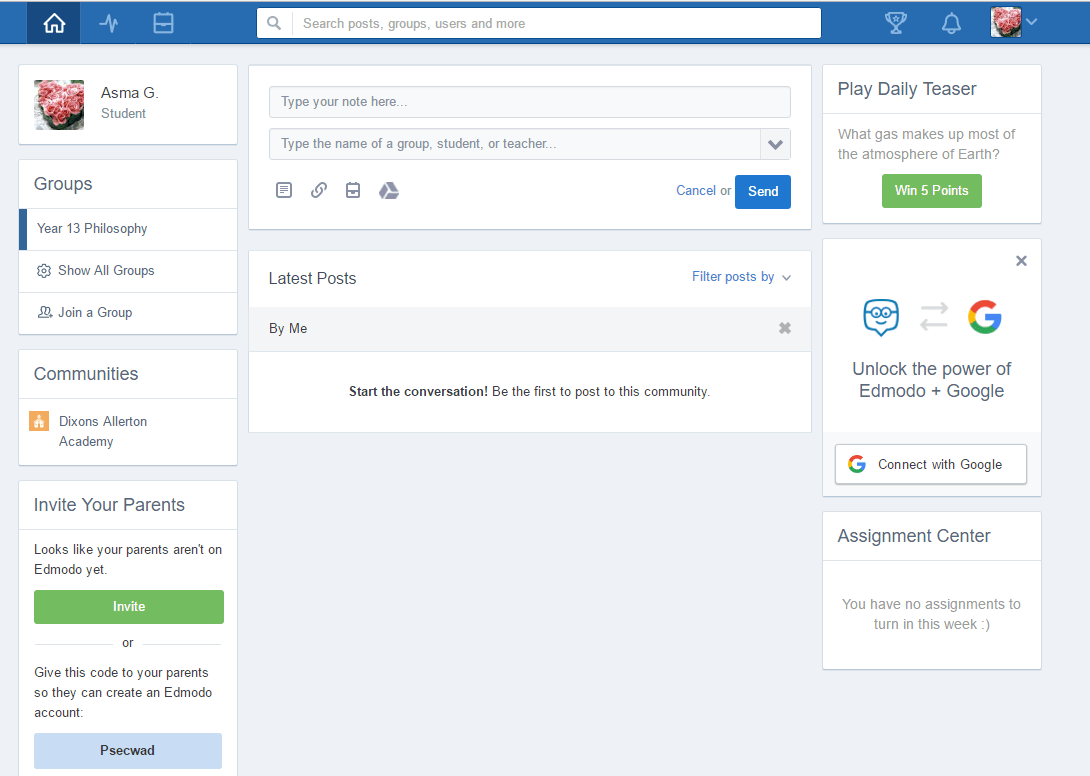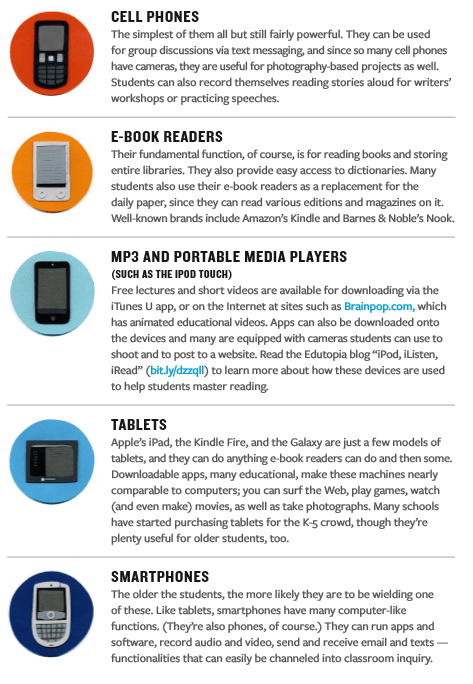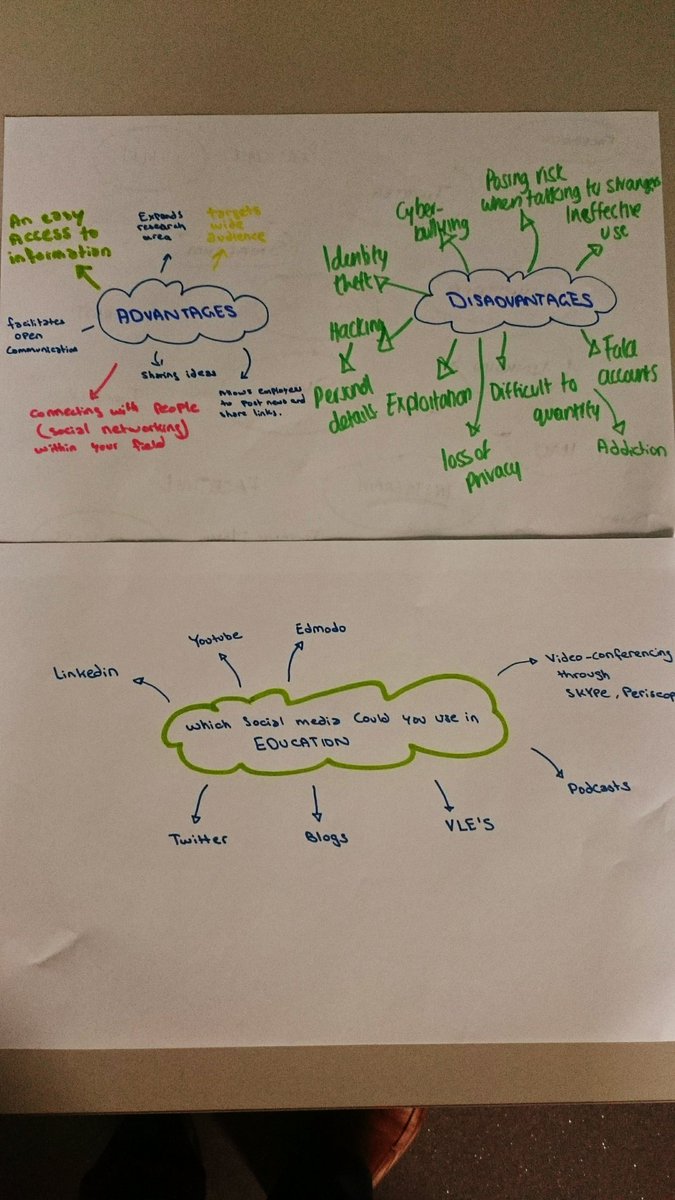Edmodo is an online network application used by both teachers and students. It has features just like Facebook, however it is more professional and used for educational purposes. It is a tool of communication and interaction within the class and also provides teachers and students to interact with each other.
Edmodo can be created by teachers for different groups/classes and can be managed and controlled by the teacher. The teachers have to provide students with an access code to join the class, students are only able to communicate with their peers within the same group and parents are also able to access Edmodo to see their child’s progress (Jark 2010).

The home page of Edmodo (for further information on how to use Edmodo you can watch this video https://www.youtube.com/watch?v=4-KBwriCO-Q )
Millis (2011) points out that teachers have recognised that Edmodo has strengthened their relationship with students and led to a stronger classroom community. Furthermore, Jarc (2010) states the features of Edmodo that students are able to share content, submit their homework, take part in quizzes, recieve feedback from their teachers, have discussions with their peers and receive notifications. Therefore it is a Learning Management System which provides teachers with the facility to create and manage online classes effectively and in an easy way (Witherspoon, 2011). This clearly means that Edmodo is a great learning platform which is a powerful process to deliver education beyond the classroom.
There are also some disadvantages which need to be considered for Edmodo, is that it can be time consuming, difficult to use, plagarism is likely and not everyone will have access to the internet.
Kongchan (2012) states that many times teachers overestimate students technological skills, however not all students possess good ICT skills so they can find tools like Edmodo difficult to use and this could lead to them being discourage to use it. Ling et al, (2010) also argues that some students could feel uncomfortable when having to communicate in an environment which is unfamiliar, they may find face to face communication an effective way.
References
Ac.els-cdn.com. (2014). A Study on “Student Preference towards the Use of Edmodo as a Learning Platform to Create Responsible Learning Environment” – ScienceDirect. [online] Available at: http://ac.els-cdn.com/S1877042814042396/1-s2.0-S1877042814042396-main.pdf?_tid=e36645d2-1a45-11e7-8143-00000aab0f6b&acdnat=1491427492_9332cb5e901fdec6318ebafedf0d3b46
Manowong, S. (2016). Undergraduate Students’ Perceptions of Edmodo as a Supplementary Learning Tool in an EFL classroom. [online] Journal.su.ac.th. Available at: http://www.journal.su.ac.th/index.php/suij/article/viewFile/599/617
S. Enriquez, M. (2014). Students’ Perceptions on the Effectiveness of the Use of Edmodo as a Supplementary Tool for Learning. [online] pp.1-2. Available at: https://pdfs.semanticscholar.org/21a3/c7927da1d912b217408482880ff42592732d.pdf.





 students can have an increased motivation, enhance learning experience, improve their learning, gain a deeper understanding of the topic, enhance team work (Willmot et al, (2012) p.3).
students can have an increased motivation, enhance learning experience, improve their learning, gain a deeper understanding of the topic, enhance team work (Willmot et al, (2012) p.3).
